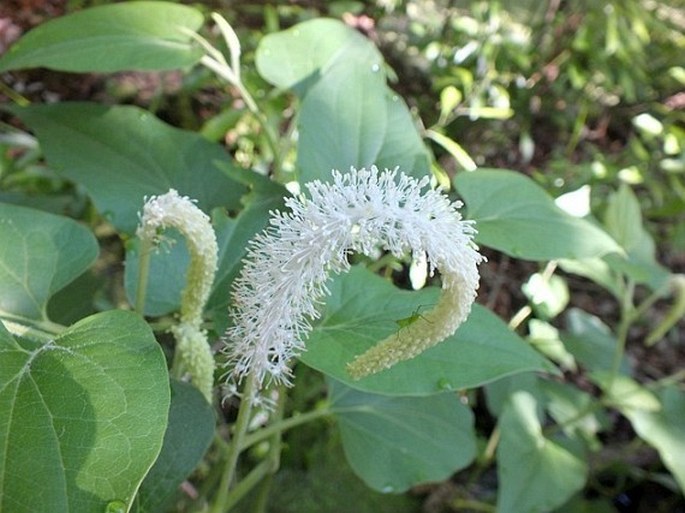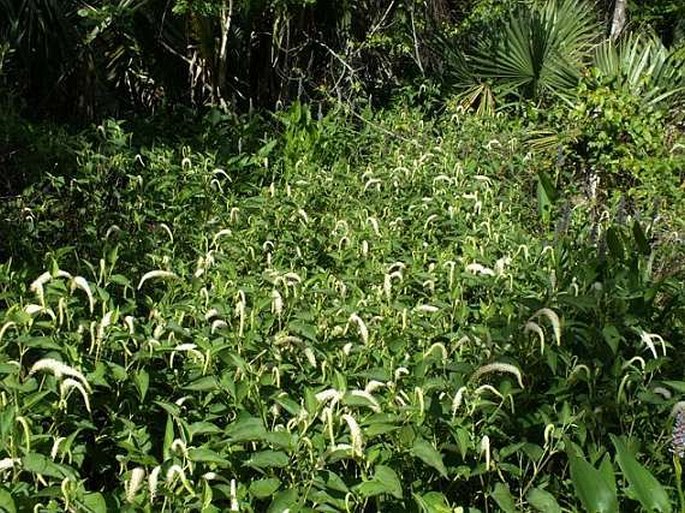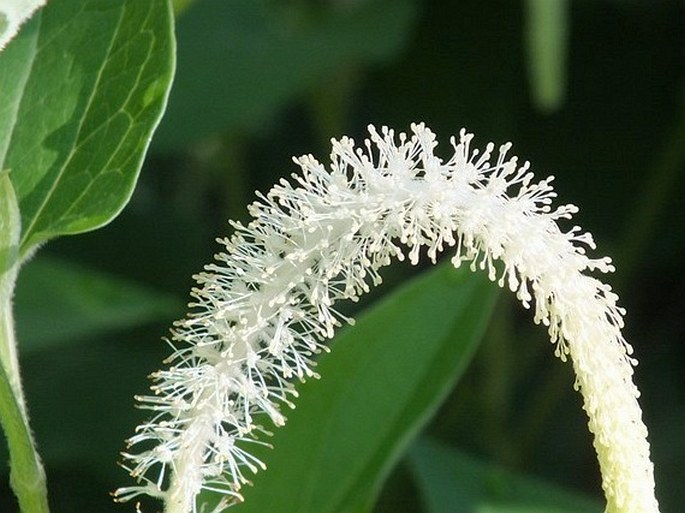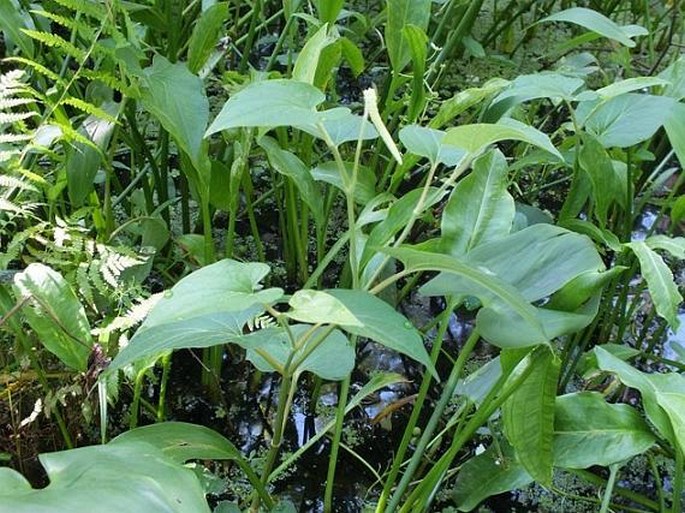Syn.: Saururus cernuus f. submersus Gluck
Family: Saururaceae Rich. ex T. Lestib.

Distribution: North American species of the eastern half of the continent, from Ontario and Quebec and from Wisconsin to Texas and Florida. Plentiful in subtropical climate of the southern states, less so going north.
Ecology: Found in bogs and swamps, freshwater and even brackish, to depth of 50 cm, at elevations from sea level to 500 m. Blooms in spring and summer, sometimes early fall.

Description: Perennial herb, 15–120 cm tall, from a rhizome, often with adventitious roots. Stems pubescent when young. Leaves alternate, petiole 1–10 cm long, blade lanceolate to almost triangular with cordate base, 2–17 × 1–10 cm. Inflorescence is a solitary spike, slender, tapering with a drooping tip, opposite to the leaf, consisting of many tiny, 2 mm, fragrant, white flowers, perianth absent, stamens 3–7, ovary superior, carpels 3–4. Fruit is a schizocarp, 1.5–3 mm, rugose, seeds brown, smooth.
Threat and protection: Can become weedy under favourable conditions. Endangered in states of Connecticut and Rhode Island.
Use: There is a record that this plant was used by original tribes for certain medicinal purposes.
Note: The genus Saururus includes only two species, Saururus cernuus and S. chinensis from eastern Asia.



These images were taken in USA, Louisiana, Jean Lafitte National Park (May 2014).


